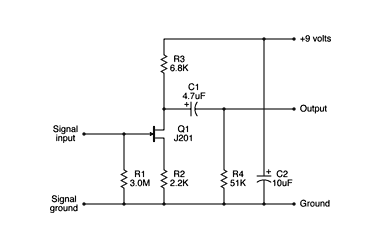Big Monk
Well-known member
The missing context is maybe, again, that Cornish is designing things based largely on parts/methodology/design principles from the 50s-70s. You're getting a Cornish pedal not because it represents the apex of 21st century small signal amplification design or whatever, but because you want to buy the thing from the guy who's been making it the same way for 40yrs, progress be damned etc.
I think there is some nuance, at least in my implementation:
1.) Transistors and the corresponding parts seem to fit better overall in my PCB layout. Also, using BJTs means I can use the same transistors I'm using in my Fuzz and other pedals and get volume discounts.
2.) Transistor buffer stages do work well, which is a plus.
You might like the way the Cornish buffer design sounds with your guitar or how it reacts with your particular pedal design? If so cool, party onward. If you just need an input buffer for whatever reason there are much simpler ways to go.
I think his buffer is pretty complex parts wise. I personally look at it with interest mainly in the way that adding a bootstrap resistor can:
1.) Allow me to get higher input impedance without my current Darlington stage, which lets me use a transistor I already stock.
2.) Allows me to use smaller, more commonly available, and cheaper base resistors in my buffer, of which I already stock and can get a volume discount on.
I've been very conscious of cost recently and this is a natural side effect of ordering and seeing that certain posts simply cost more, etc.


